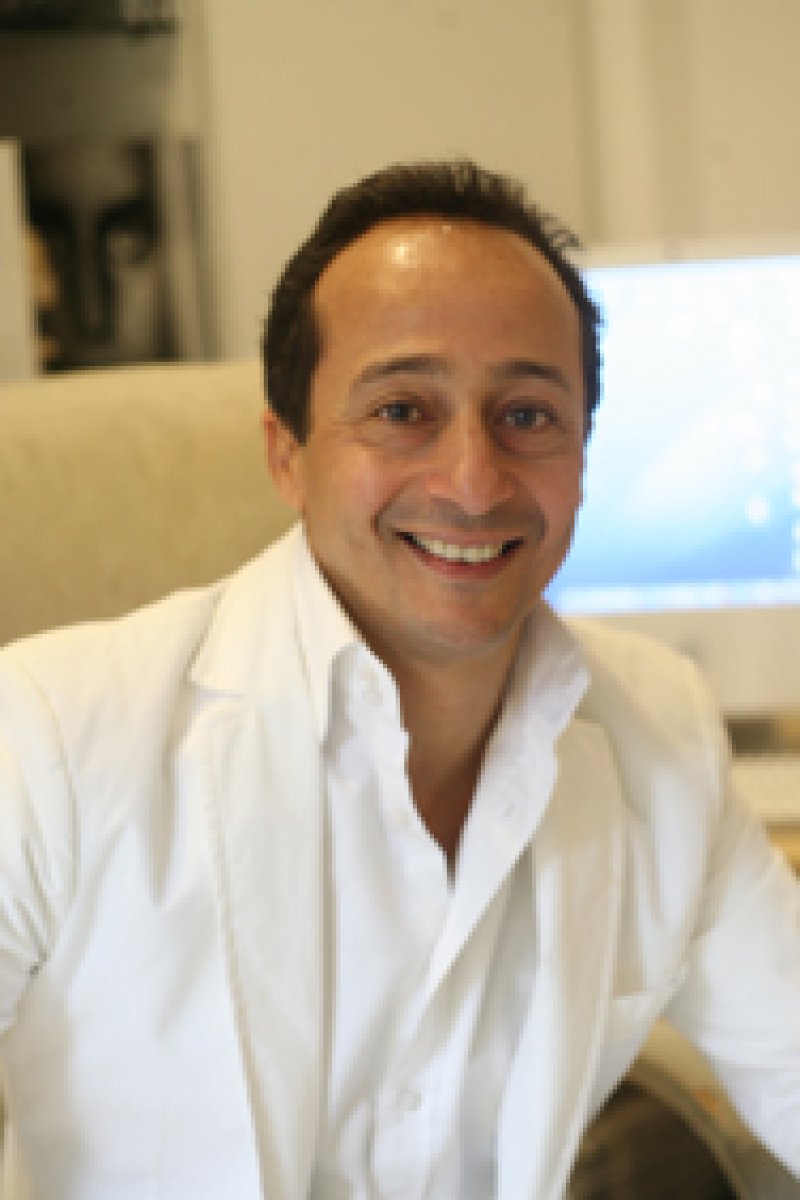Fahd Benslimane is, as few people know, an insatiable researcher who moves from international conferences to patent applications, via medical publications in the best known plastic surgery journals in the world. Together we broached one of the concepts that defines our contemporary lives: beauty.
Is there a definition of beauty?
There are several definitions of beauty, and this is because of its subjective perception. More specifically, it is a set of curves that may give rise to admiration due to their shape or their total conformity with what we expect and what we desire. However, the issue of beauty in humans touches upon the qualities of the soul and character. In fact, since the Greek Golden Age, beauty has always been associated with other qualities such as moderation and conventions. “Harmony is the most beautiful thing,” the Greek philosophers said.
If we use the word conformity, then there must be a standard…
When we talk about conformity with something that we expect or desire, this also means that there is a personal and individual perception, or even a cultural one. Thanks to or because of the media, beauty is being universalised as Emmanuel Kant believed: “The beautiful is that which, apart from a concept, pleases universally.” That being said, if there is a prescribed standard, it is that of a universality originating from the Western Caucasian model.
Are there lines and curves that define perfection and the excellence of beauty? We get the impression that this definition has been relative throughout the course of history…
Of course, technical inventions, and namely those in imagery, have completely modified the perception of beauty. Before the invention of photography and cinema, nudity and looking at it, was a strictly intimate matter. The only nudes seen in public were in the works of artists, painters and sculptors. In the 20th century, nudity became part of everyday life which came along with the emancipation of women. Once the body was exposed to admiration and to sarcasm, the concern for its representation was applied in practice in new forms of hygiene: diets, outdoor sports and towards the end of the 20th century, new plastic surgery, as a way of achieving one’s objectives.
Have the developments in plastic surgery methods created and amplified these new forms of representation?
If a person lived alone on a desert island, they would never need plastic surgery. The scrutiny of others determines one's silhouette, as well as the mirror. The fact that plastic surgery has affected almost the entire world proves this. The lack of self-reflection in a mirror or the scrutiny of others, eliminates this pursuit of the representation of self-image. On the other hand, the largest mirror in contemporary society is incarnated by the media, which amplify new standards and new criteria generally coming from an avant-garde environment, that of fashion and its creators. The explosion of plastic surgery is due to the diffusion, by the media, of these new criteria for the representation of the body. Finally, the development of plastic surgery is, above all, encountering this historical time of individuality which all our societies have been going through for 40 years. There is a new care of the self and a real will to improve oneself both spiritually and physically. We are living in the era of “personal development” where plastic surgery finds a place along with coaching in personal “wellbeing” strategies.
But are a harmonious social life and sexuality possible outside of beauty?
Of course. The world does not revolve around beauty alone. Fortunately! A study was carried out by the Lancet Journal on the personal happiness of people recognised as “beautiful” by society, such as models, beauty pageant winners, etc., compared with people whose appearance was deemed average. The result was astonishing: the rates of depression, divorce, suicide, childlessness and end-of-life loneliness are much higher for the “beautiful" than for the “average”-looking people. Excessive beauty is a disgrace for the human being. If beauty opens doors initially, the price to be paid subsequently is very high. Around a beautiful person who has succeeded, there will always be the kind of aura of non-credibility and non-recognition of their worth and therefore, of their work. In actual fact, beauty masks the efficient reading of worth. Since Greek philosophical wisdom and monotheist religions lauded moderation in everything, in order to achieve harmony, then perhaps this idea has proven itself through the ages, has it not?
Women are increasingly becoming victims of physical complexes that they did not feel as strongly 50 years ago.
The human being has a visceral need for “normality”, and once this has been achieved, there is the desire to extend the idea of their originality. Patient requests have evolved in the same direction. The first demand for plastic surgery almost always originates from an aspiration for “normality”: not to have a big tummy, large breasts, protruding ears. Once this has been done, it leads to requests that bring plastic surgery form the basic stage to the stage of more subtle and refined surgery that aims for excellence: brighten an expression, perking up the buttocks, reworking lopsided hips, etc. These two necessary steps must be integrated in order to comprehend and understand the great diversity of the technical possibilities of plastic surgery in the 21st century.
As a plastic surgeon, how do you assess which wrinkle or curve is beautiful or not?
When I began my specialisation almost 20 years ago, I was convinced that there would be a class on “the aesthetic ideal and the question of the Beautiful”, “the concept of the Beautiful”, the beauty and Art", the philosophy of beauty", etc; but, there was none. All the descriptions of beauty do not come from surgeons, but from philosophers, poets and artists. I completed my course and I realised that plastic surgery was many steps behind other specialisations. All medical disciplines always start with a procedure of inspection, palpation and auscultation, defining the semiology of the diagnosis or the science of signs. An example: a pain in the right iliac fossa plus vomiting plus a 38.5° fever, leads us to diagnose appendicitis. In plastic surgery, there is no semiology. It is like giving aspirin to everyone. Do you have falling breasts? We’ll bring them back up! Small breasts? We’ll enlarge them! Drooping skin? We’ll tighten it! There is no semiological research, in the sense of asking questions: “what are ideal breasts?", "what are ideal buttocks?", what are ideal legs?". When I say “ideal”, I am not talking about the “most beautiful”, but “that which gives rise to admiration”.
If plastic surgeons are not concerned by the definition of beauty, what is really the purpose of their vocation?
This issue has to be put in its historical context. Plastic surgeons at the beginning of the 20th century sought to fulfil the demands of their patients, but they lacked safe techniques. Until the 1970s, more than half the people who had had nose operations, breathed through their mouth since their nostrils were blocked! So we understand why these pioneers concentrated their efforts on the development of secure techniques and not on philosophical reflections on beauty. It wasn’t until the end of the 1970s that Jack Sheen, the father of modern rhinoplasty, grew tired of the series of trumpet-shaped noses and asked “What is a nice nose?” He was the first in all of the history of plastic surgery to establish a reading base for a beautiful nose. Then, the reflection of practitioners began. In the 1980s, surgeons Ellenbogen and Conell defined what was a beautiful neck and a beautiful face. Then, at the beginning of the 1990s, Sydney Coleman and John William Little expressed their opposition to the face lift as the only method of facial rejuvenation. The question of the “ageing model” was finally asked: atrophy and the loss of volume on the face were considered as important as their fall. When a woman says that her face has sagged, she analyses the problem as being one of a simple fall of tissue. In fact, this is a conjunction of loss of bone volume through osteoporosis, muscle atrophy, fat and colloidal tissue, dehydration and thinning of the skin. It is this conjunction that shrinks the face and makes it lose its fullness, so characteristic of youth. This is really like going from the plum to the prune, from the full grape to the raisin! By conceptualising this model of ageing, Sydney Coleman put the brakes on the face lift, which stretches the muscles and the skin, as the only method of facial rejuvenation.
How did this development help you in your research?
It is undeniable that my regular visits to these contemporary pioneers have allowed me to take my reflection further. But there is another element which is just as important: my irritation at certain "new faces" operated or "injected" that we see here and there. The example of the swollen “sausage” mouth is edifying, even historically: if you look at works of art, from Ancient Greece up to the Art Nouveau period (early 20th century), women were represented with small mouths and thin lips, all in a reserved smile owing to modesty; the case of the Mona Lisa and her enigmatic smile is a clear example of this. Then comes the beauty of provocation, proposed by the avant-garde movements of the 20th century, which smashed the aesthetic rule until then respected to pieces; increasing prominence is given to lips, by emphasising their colour (like, for example, on the images of Marilyn Monroe created by Andy Warhol). Then the media got involved, by excessively publicising the carnal aspect of lips, with the aim of satisfying the erotic urges of the greater public. The result: the appearance of 60 year-old women with fish lips that they would never have had at 20! This is when there was a trigger; one cannot go too far from what is “natural” without touching on the ridiculous. Here again, Greek wisdom prevails: “Beauty is the splendour of the true,” said Plato.
All your research has resulted in the respect of the natural line, i.e. the concept of “beauty” defined by Greek wisdom. How did you come to this conclusion?
Thanks to the “new concept of ageing” proposed by Coleman, I went farther in my reflections by looking at the light emanating from the face, and more particularly the eyes, which are the source of human expression. For more than 50 years, plastic surgeons, impelled by the media, have focused their attention on the pockets and wrinkles of the inner eyelids and the “pseudo skin excess” of the upper eyelid; this led to an erroneous perception of peri-orbital ageing. I realised that we mustn’t focus on these details, but rather widen the perspective in order to see the eye as an entity at the centre of a general artistic framework. This study lasted 8 years and was carried out in three different stages. The first was the study of the “most beautiful eyes in the world” (Catherine Zeta-Jones, Monica Bellucci). The aim of this study was to determine what all these beautiful eyes had in common. The second stage of the research was an anthropological study on the eyes of man. In fact, our ancestors had a flat forehead. It has rounded through evolution. The same applies to the prominent arch of the eyebrows, which have softened. The deep eye has come to the surface. This is why we are bothered by the eyes of a primate, which send us back to the image of our own ageing, while we are fascinated by the eyes of felines. In the first case, the eye of the primate is set in a disproportionally large cavity. On the other hand, the eye of the feline gives the impression of being planted on the forehead without any surrounding cavity. This results in a great concentration of light on the eyes with a unique hypnotising effect. Based on these observations, I developed an artistic model: the Frame concept.
What is the link between this theoretical concept and its application in surgery?
The objective was to imagine a procedure to shrink the frame around the eyes. I had to develop a technique to eliminate the shadows of the eye socket cavity with an original surgical procedure. To that end, I developed spiral micro-canules which are now patented. Actually, I just published the premliminary results of this research in the Aesthetic Surgical Journal in collaboration with Micheal Yaremchuk from Harvard Medical School. The complete results of the study will be published in a new book I wrote with Sydney Coleman.
So, the definition of beauty cannot be reduced to figures?
The Greeks proposed a grid of beauty in numbers, drawings in thirds. Later, the Renaissance scholars took the notion of proportion and dedicated light, as the fundamental element in the volumetric shine of a face. Indeed, there can only be luminous reflection on a convexity. The presence of concavity (eye socket cavity, temples) creates an unpleasant shadow in the human eye. Beauty is therefore much more subtle than just numbers. To try and grasp it, we would have to scan a face in a 3D computer and calculate all the curves, the degrees of inflection, and the variables of the living matter. So you see, beauty cannot be reduced only to the principles of proportion developed by the Greeks. I very humbly believe that we are today in the early days of plastic surgery and of the criteria for our comprehension of what beauty is.
You can read more about Fahd Benslimane at his site

































































